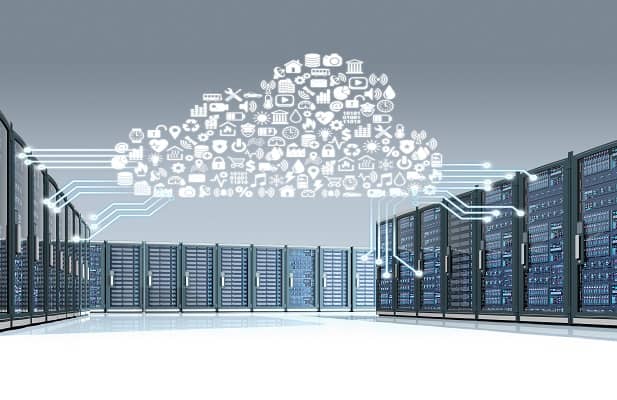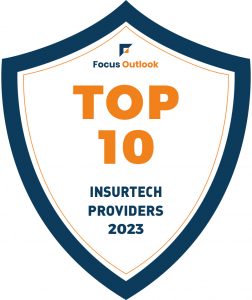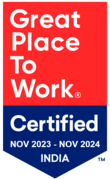Mainframes represent an organization’s brain, a hub for maintaining technological operations’ integrity.
Historically, mainframes have been the single most important asset for organizations in various industries, such as banking, insurance, and the government.
The 2019 pandemic propelled organizations to transform their IT setups to be more flexible and resilient. These modernization initiatives resulted in a mass transformation where enterprises around the globe moved their operations to the cloud.
But is the cloud truly the superior option? A HashiCorp report says that 45% of the low cloud-maturity organizations are still waiting to benefit from their cloud strategies. Also, according to the latest survey, only 6% of the respondents said that other technologies would replace mainframes in the near future.
These insights demand a deeper dive into cloud computing’s nature, features, and how they compare to the benefits that mainframes provide. Let’s get started.
Table of Contents
Introduction to Cloud Computing And Its Growing Popularity
At first glance, the cloud appears to be popular in 2024. According to a HashiCorp report, 66% of the respondents had higher budgets to spend on the cloud than the previous year. However, the same report also highlighted that 91% of the respondents are actually wasting money in the cloud.
These numbers draw attention to the fact that while moving to the cloud appears to be a prudent option for modernizing business operations, enterprises still lack clarity on how to budget and plan cloud expenditures.
So, can the cloud replace mainframes? The short answer is not entirely. Legacy systems demand more resources to stay online and perform at the same level as modern solutions.
However, an efficient hybrid system can be established by delegating the CPU-intensive functions to cloud systems and retaining mainframe for other purposes.
A recent report by a leading IT service provider reinforces this observation. Almost 50% of the responding executives said they use cloud services only to integrate enterprise data for AI applications. Another 30% leverage cloud only for the vast computing capacity it provides.
The remaining operations of their organizations stay with the mainframe. For example, mainframes handle 90% of all credit card transactions today, and over 70% of the Fortune 500 companies employ them (IBM).
Hybridizing the workload between the cloud and mainframes is the most prudent way to modernize enterprise operations. The trick lies in striking the right balance between both technologies that allows enterprises access to high computing power while retaining control and security of data.
The Advantages of Cloud Computing
Cloud-based systems became popular for a reason. They help organizations improve collaboration between their teams and enhance the accessibility of company resources for the employees.
According to a recent survey, 71% of surveyed executives expect cloud spending to increase by at least 25% in the coming couple of years. This highlights the cloud’s potential to drive business innovation and operational efficiency.
Cloud systems offer three tangible benefits to organizations:
Scalability and Elasticity
The cloud provides unlimited and dynamic storage and computing facilities that do not require any real estate on business premises. It allows to scale the requirements up or down at a moment’s notice while keeping data and operations centralized.
These features come in handy when business prepares for strategic growth spurts or scales down to replan its future path. For example, for organizations sizing down significantly, the cloud provides enough elasticity for downscaling without moving or modifying any physical technology.
Integration Power
Cloud systems act as a bridge between organizations and computing capabilities. They open up integration avenues with modern technologies like AI and ML, both of which are resource-intensive and require enormous computing power.
More than 65% of the respondents in a recent survey, rank access to new technologies as the top business priority for the cloud. Cloud systems also enhance integration between enterprise apps by establishing a centralized, unified “house” and providing APIs (Application Programming Interfaces) to build custom connections.
Cost Effectiveness
Most modern cloud systems offer pay-as-you-go or pay-per-use subscription models that allow business to plan expenses according to their needs. The lock-ins aren’t as stringent anymore, and the competitive landscape has allowed better-value services to emerge.
By delegating some operations to cloud systems, enterprise can save tremendously on upkeep, service expenditures, and systems maintenance. Enterprise will also save on the real estate expenses of housing mainframes.
Can Cloud Fully Replace Mainframes?
The answer to that question depends on several factors, including the nature of company’s workloads, the criticality of applications, and organization’s specific needs (like high computing power or flexible storage options).
Here are some key considerations that can help businesses formulate a rewarding cloud strategy:
1. Reliability Factor
Mainframes are more reliable and are known to provide 99.999% availability, even during critical workloads. The same cannot be said about cloud-based systems. While clouds claim 99.99% availability, the terms of service, offerings, and other vendor-client arrangements may affect that figure.
2. Latency
Mainframes are designed to handle large-scale transactional workloads with extremely low latencies, making them a strong contender.
While clouds also boast high computational capabilities, the deployment depends on company’s network and its strength, introducing some latency in the workflows. Mainframes may be the better choice if businesses require real-time processing power with absolutely no delays.
3. Dependencies
Many organizations work with legacy systems and software hosted on mainframes. Migrating such high-dependency software, which is central to business operations and cannot be taken offline, can prove to be cost- and effort-intensive.
Significant app optimization and reconfiguration can also be expected, further adding to the migration downtime.
4. Cost
Cloud computing is cost-effective in several scenarios. However, the total cost of ownership may vary depending on crucial factors like usage patterns, workload complexity, service models (IaaS, PaaS, SaaS, etc.), and deployment models (public, private, or hybrid).
To get the full picture, it is advisable to conduct a cost identification and quantification exercise that specifies expenses like hardware, software, personnel, facilities, maintenance, licensing, and miscellaneous costs.
An analysis of these factors could reveal mainframes as the more economical option for some organizations for several reasons:
- Processing Power: Mainframes are designed to work with high-volume, high-speed transactional workloads. They deliver consistently, even with millions of requests per second. On the other hand, cloud environments, while comparable, aren’t nearly as quick and reliable as mainframes in real-time and continuous processing power.
- Backward Compatibility: Cloud environments are wired to work and integrate with the latest technologies. All the services, software, and offerings we find on the cloud are updated to the latest versions and may not offer backward compatibility with critical enterprise systems. With mainframes, backward compatibility isn’t a problem.
- Resource Ownership: Resource ownership and control are particularly sensitive matters for industries like banking, finance, and government bodies. Mainframes allow total control over setup, infrastructure, access (physical and digital), security and safety, emergency protocol, and any other aspect. This is desirable for organizations seeking airtight data measures and operations. Cloud systems shift reliance on external service providers, introducing variables into critical aspects such as ownership, sovereignty, and data and information security.
- Security: Mainframes and cloud environments offer different security features. With mainframes, we can set controls like encryption, multifactor authentication, auditing, physical monitoring, logging, etc. We have the flexibility to set up isolated, sealed mainframes for critical data and processes. With cloud environments, the security is vendor-specific and may vary. It is up to businesses to decide the mechanism and operation of the security protocol. However, we do get secure access to governance and organizational policies.
- Application Modernization: Mainframes tend to restrict application modernization because applications depend on specific mainframe features or hardware. This may create migration and compatibility issues, affecting long-term transformation strategies.
- Other Aspects: Modernized mainframes, such as IBM Z16, offer cryptographic algorithms to enhance data security and create robust defense mechanisms against quantum computers. Such mainframes can prove pivotal enhancements for fraud detection in industries like finance and healthcare.
Hybrid Solutions: The Best of Both Worlds
Mainframes are tremendously capable computer systems that offer several advantages in processing power, reliability, security, and high-volume workloads, but they are also associated with high running costs and inflexibility. Cloud systems eliminate these limitations, propelling companies toward the switch.
Hybrid solutions balance cloud-based flexibility and mainframe-oriented reliability, extracting the best of both worlds. In fact, Gartner estimates that 90% of enterprises will have a mainframe-cloud hybrid setup by 2025.
Companies should consider hybrid solutions for several reasons:
Seamless Integration
Modern technologies like APIs, middleware, containerization, and data connectors provide seamless integration of mainframes with the cloud. Hybrid environments de-isolate mainframes and make that data more accessible. We can modernize mainframe without executing major system overhauls.
Real-Time Data Sharing
Connecting mainframes to the cloud and creating a hybridized environment makes data more accessible and flowable. Business intelligence software hosted on the cloud can easily access mainframe data for real-time analysis, derive critical business insights, and catalyze decision-making process.
Security and Compliance
There have been quite a few infamous security instances in the world of business, which solidifies the importance of mainframe security for business operations. A hybrid environment introduces enough flexibility in the mainframe setup to allow room for innovation while maintaining data integrity, compliance, and security according to the latest protocols (like GDPR, PDI DSS, etc.).
Use Cases
Over half (52%) of organizations reviewed in the advanced survey admit that they plan to maintain or increase their dependency on mainframes. The hybrid road has definite benefits, as demonstrated by a major Canadian furniture retailer’s migration and modernization of their mainframe applications to web-first technologies.
Kumaran Systems Inc. was engaged with this Canadian giant in a strategic partnership for their IT needs. Kumaran helped them transform their mainframe workloads to modernized solutions.
The Challenge
The Canadian furniture retailer was facing four major business challenges pertaining to their mainframes:
- High costs are associated with the maintenance and upgrade of their expensive legacy systems.
- Scarcity of legacy system expertise.
- Risk of running unsupported hardware and software.
- Lack of web capabilities and integration difficulties for various business applications.
The Kumaran Solution
Kumaran understood the client’s requirement for dynamism in their systems and suggested a migration/re-engineering approach that would convert mainframe applications into HTML5/JEE with DB2.
Kumaran migrated the whole application to the Java Enterprise stack using semi-automated NxTran mainframe-to-Java conversion. Further:
- The UI was developed using HTML5, Bootstrap, and Angular.
- All COBOL programs were converted into Java programs.
- Kumaran used the Spring Rest Service to implement business logic for each mainframe terminal screen.
- Kumaran inbuilt tools were used to port data from VSAM to DB2 after their conversion.
- JCL batch programs were converted to Spring Batch Java programs.
- Business Objects Crystal reports were used to convert all COBOL and SAS reports into web-based reports.
The Result
The transformed applications were deployed in the target environment within the proposed budget and stipulated time.
The transformed system worked exactly like the existing application with no glitches or problems.
FAQs
Is mainframe a dying technology?
No. Mainframes continue to evolve and remain integral to critical operations across industries such as banking, insurance, and government.
More than 70% of Fortune 500 companies still use them, and modern platforms like IBM Z16 now offer advanced capabilities, including AI acceleration and enhanced cryptographic security.
While the availability of skilled mainframe professionals is declining, the demand for the reliability, processing power, and security mainframes provide remains strong.
Is cloud better than mainframe?
The answer depends on the nature of your workloads and business priorities. The cloud offers flexibility, rapid scalability, and easy integration with emerging technologies.
Mainframes, however, excel in processing high-volume transactions, delivering near-continuous availability, and providing strong control over security. Many enterprises adopt a hybrid approach — retaining mission-critical workloads on the mainframe while using the cloud for innovation and scalability.
How long will the mainframe be around?
Mainframes are likely to remain a core technology for the foreseeable future. Surveys indicate that more than half of enterprise leaders intend to maintain or even increase their mainframe usage.
Their proven ability to deliver 99.999% uptime, handle mission-critical applications, and process high-speed transactions ensures their continued relevance in industries where reliability and security are non-negotiable.
Why is cloud computing not the best option for all companies?
While cloud computing delivers benefits such as cost efficiency and agility, it is not always the most suitable choice. Certain legacy applications are not designed for the cloud, and migrating them can be costly and complex.
Additionally, industries with stringent compliance, data sovereignty, or physical security requirements may find that retaining key workloads on mainframes or on-premises systems offers greater control and reduced risk. In these cases, a hybrid model may deliver the best results.
Summing Up
Cloud environments offer countless benefits to businesses, such as cost savings and quick deployments.
While this setup is optimal for start-ups and mid-sized companies, it cannot completely replace mainframes. Retaining some functions on the mainframe is especially necessary for organizations that run mission-critical legacy systems.
If your organization is shouldering a slowdown because of legacy mainframes, it is time to partner with Kumaran Systems for an upgrade. We can help you establish a well-balanced and expertly configured hybrid environment that facilitates business operations in a modernized way.
Contact us today to boost your enterprise’s performance and prepare for its next phase of growth.



